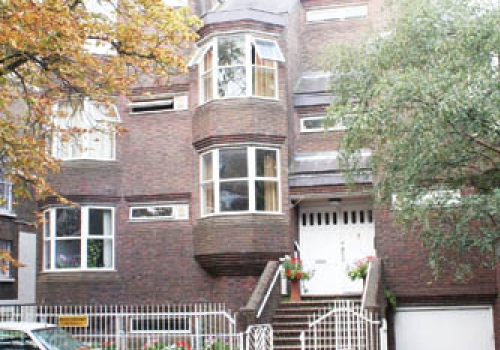Home >> News >> 2011 >> Sep >> Property News: Eyesore! Proposal to replace 1970s Highgate flats thrown out after style comes under fire
Property News: Eyesore! Proposal to replace 1970s Highgate flats thrown out after style comes under fire

Published: 08 September 2011
by DAN CARRIER
AN “eyesore” block of flats in one of Highgate’s most architecturally renowned streets has been given a stay of execution after a conservation group spoke out against plans to pull it down.
The owners of 12 The Grove had submitted a planning application to replace it with a new building, based on Victorian villas that run along the north end of the street.
But the Highgate Society intervened by writing to Camden Council’s planning committee voicing their objections – and at a planning meeting on Thursday, councillors threw out the scheme.
The Society’s Michael Hammerson, who deals with planning issues, said the objection was not because they had any affection for the 1970s building, which is set in a street that dates from the 1600s.
Instead, he said the Society feared the proposed building to replace the block was simply a poor pastiche of Victorian design, and that the Society would rather a highly contemporary house take its place.
Over the years the street has been home to famous figures including Samuel Coleridge, JB Priestley, the artist Roger Fry and Yehudi Menuhin. More recently stars such as Sting, George Michael and Jude Law have lived there.
The Highgate Society’s comments have kick-started a fierce row over how modernism or classical faux-Victorian architecture can fit into a conservation area.
Mr Hammerson said: “The Grove is possibly the most important street, historically and architecturally, in Highgate and therefore in London too.
“We were worried that the building they were replacing is a pretty ugly 1970s block of flats, but what they were trying to do was replace it with nothing more than a pastiche of the house that used to be there.
“We feel whatever goes up there needs to add to that, in 21st-century terms. We felt what they were proposing was a Victorian-style classical design that was just completely wrong and downgraded the conservation area, and so we put in a submission to that extent.”
He said the Society were open to having a 21st-century design on the site.
In nearby South Grove, former Commission for the Built Environment chairman John Sorrell turned his 1950s home into a steel and glass modernist house, next door to historic Highgate buildings.
It won the prestigious Stirling Prize for architecture, and Mr Hammerson said Highgate can appreciate modern buildings.
“What we want is a really good piece of architecture,” he said. “It could be uncompromisingly modern or that could fit with existing styles.”
And he said he hopes the owner will now rethink the plans instead of appealing.
“The applicant is willing to meet us and take it forward,” said Mr Hammerson. “They understand our argument and by discussing it we will save a lot of time.
“Hopefully we will get them to realise that it is in their interest to produce something that will make an architectural statement.
“There is an importance about the integrity of the conservation area as its architecture shows the history of the past 400 years, and a pastiche will degrade that, and it can be the start of a downwards spiral.”
Architectural historian Stephen Levrant worked on providing the architects with background information to the street and the plot. He said he was very surprised by the decision.
“I thought it would be a foregone conclusion,” he added. “I was completely shocked and it seems like lunacy to me, contrary to their own policies. This was a non-contentious design based on the house that was there before the present monster was built.”
Mr Levrant said that the architects drew on what had been there previously.
“We went back into history to see what was there first and they chose a design that complements the character of what is there next to it,” he said.
“By saying this does not enhance the conservation area they are saying the existing building is better than what is proposed – and this beggars belief. The existing building should never have been built.”
Mr Levrant said the owners were waiting for a written response from the Town Hall before they decided on their next move.




Comments
Post new comment